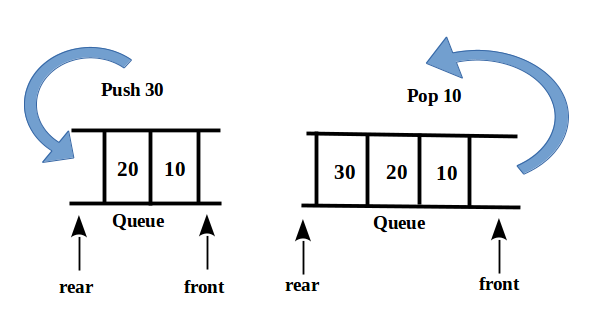

Ce model est une version discrète d’un cas spécial du model considère plutôt par Doshi (1983). Nous considérons une file d’attente Geo/D/1 fonctionnant sous une discipline de l’hybride FIFO/LIFO et obtenons la distribution du temps d’attente. These differences are significant in favor of the FIFO/LIFO strategy when the server is fast, in the sense that many tasks can be served while mean delay remains less than a specific waiting time. Computed example values of this solution illustrate significant changes in the maximum traffic intensity meeting a specified waiting time probability quantile as the FIFO waiting space varies. We present a simpler approach for studying this special case by using the matrix-geometric method to obtain the steady state distribution of the number in the system and obtaining the waiting time by studying the system as an absorbing Markov chain. The number of customers in the system at steady state is independent of the service discipline and knowing that a deterministic service time in discrete time can be represented as a phase distribution we study the system as a Geo/Ph/1 queue. This model is a discrete version of a special case of the model earlier considered by Doshi (1983). Programmed by Aleksei Petrenko and Tushar Kumar at USC RESL.ĭeveloped under MIT License, feel free to use for any purpose, commercial or not, at your own risk.We consider a Geo/D/1 queue operating under a hybrid FIFO/LIFO discipline and obtain the waiting distribution.

Originally designed for SampleFactory, a high-throughput asynchronous RL codebase.
QUEUE FIFO CODE
(there are also C++ unit tests, should run them if C++ code was altered) Footnote debug ( 'Queue is full!' ) num_received = 0 while num_received : attribute lookup c_ubyte_Array_2
QUEUE FIFO FULL
put ( py_obj, timeout = 0.1 ) except Full : log. empty () assert py_obj = retrieved for i in range ( 100 ): try : q. Usage example from faster_fifo import Queue import faster_fifo_reduction from queue import Full, Empty q = Queue ( 1000 * 1000 ) # specify the size of the circular buffer in the ctor # any pickle-able Python object can be added to the queue py_obj = dict ( a = 42, b = 33, c = ( 1, 2, 3 ), d =, e = '123', f = b 'kkk' ) q.

QUEUE FIFO INSTALL
Pip install faster-fifo Manual build instructions pip install Cython

Fixed an issue with the custom Queue pickler.Based on a circular buffer, low footprint, brokerless.Ĭompletely mimics the interface of the standard multiprocessing.Queue, so can be used as a drop-in replacement.Īdds get_many() and put_many() methods to receive/send multiple messages at once for the price of a single lock. Implemented in C++ using POSIX mutexes with PTHREAD_PROCESS_SHARED attribute. Faster alternative to Python's standard multiprocessing.Queue (IPC FIFO queue).


 0 kommentar(er)
0 kommentar(er)
